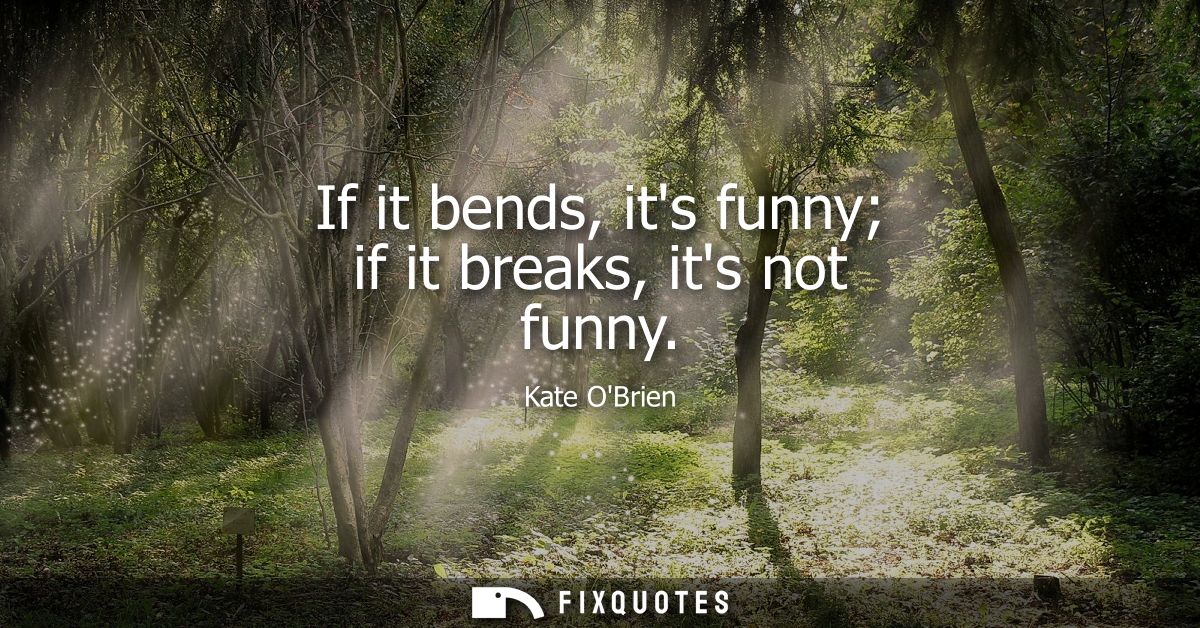"If it bends, it's funny; if it breaks, it's not funny"
About this Quote
Humor often depends on the delicate balance between tension and relief. When a subject or situation is stretched just enough to challenge expectations or taboos, yet stops short of true harm, it becomes funny. Bending implies flexibility, a situation, rule, or social norm that is playfully distorted, yet ultimately remains unbroken. Laughter emerges in this subtle space, where danger or discomfort is suggested but not realized. The audience feels safe to find amusement in the incongruity because the underlying structure, whether it be social mores, ethical boundaries, or personal dignity, is tested but preserved.
Breaking, conversely, signals an irreversible crossing of limits. Once something breaks, a person’s spirit, a sacred rule, a social or moral code, the humor evaporates. What was once a playful challenge transforms into real pain or destruction, eliciting discomfort, empathy, or even outrage instead of laughter. This is the difference between teasing and bullying, satire and cruelty, irony and humiliation. The transition from bending to breaking marks the threshold between what people are willing to laugh at and what causes them to recoil.
The finest comedians, filmmakers, and writers excel at judging precisely how far to bend reality or social expectations without shattering them. A good joke nudges at boundaries, making the familiar unfamiliar just long enough to provoke a laugh, but not so much that it invites genuine hurt or offense. This distinction is subjective, what bends for one person may break for another, but universally, laughter is rooted in the safe exploration of discomfort, not actual suffering. As a result, the task of humor is to find that sweet spot where transgression remains playful, illuminating the absurdities of life without causing real harm. The wisdom in knowing when to stop is essential, for the difference between bending and breaking is the difference between comedy and tragedy.
About the Author

